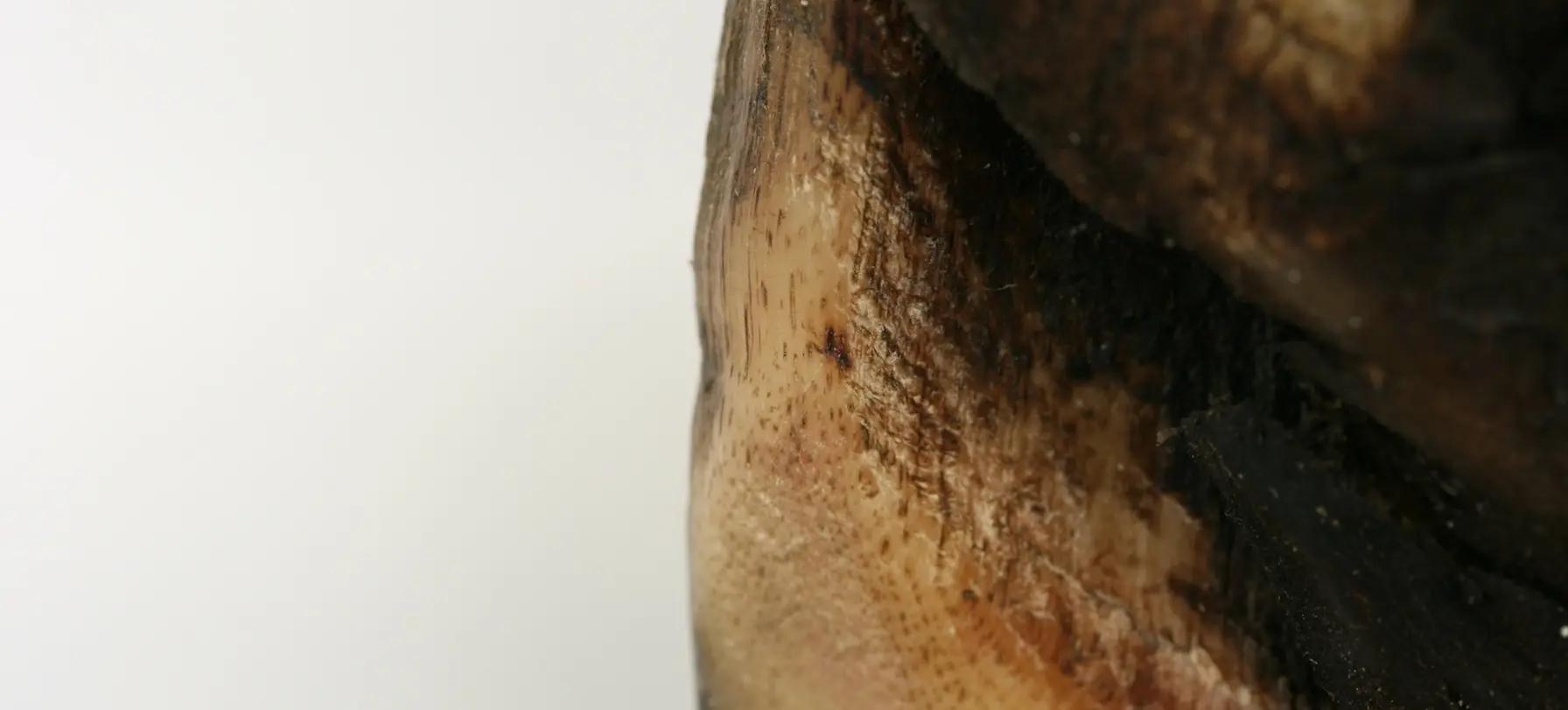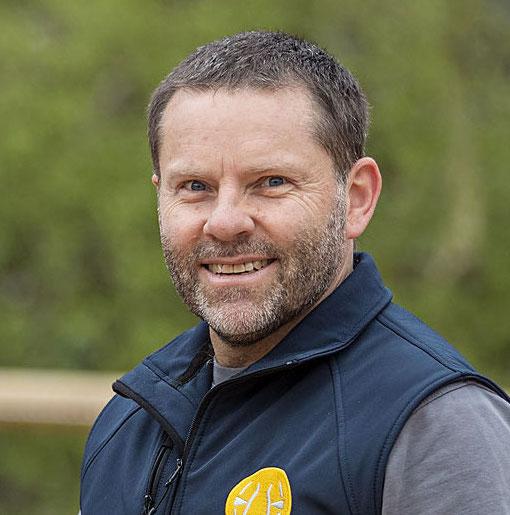02 July, 2024
I have been studying the stress points on the heels of the horse's foot for 25 years. I always take them into account during my trimming. They have also been a source of observation for the Veterinary University of Leipzig (Germany), during the scientific studies on the F-Balance® concept that we carried out in 2012 together with Dr. Laura Müggli and Dr. Jenny Hagen and their respective assistants, and farriers Stephan Stich (Germany) and Alejandro Asensio (Spain).
From my experience, the stress points provide very good information and are very useful to take into consideration. You just need to know more about it. I am constantly observing them to learn more for the benefit of the horse. Actually, it is one of the existing references, which we use during trimming of hooves in our schools.
I consider the stress point to be the point where the load coming from the weight of the horse and the counter forces coming from the ground meet.
The hoof in its natural state wears down to that point. A hoof worn down to the level of the functional sole (also called live sole or level 0) has no stress points. This mark starts to become visible when there is growth without wear. From my point of view, it is a natural regulation of the heel length, because from a simple stress point it usually turns into a crack (it does not always happen), which allows the horse to eliminate the excess heel, thus recovering its normal length and consequently the dorsal-palmar balance of the foot as a whole. This is a natural defence that occurs in horses that live in areas where their hooves do not suffer from wear and tear.
When the hoof is healthy on the outside and inside, i.e. all the structures are in harmony and there is no deformation of the horny shell, the stress point always corresponds to the level of the functional sole.
In 99.99 % of the cases, the length of both heels is the same in the same foot. This is determined by the stress points, the stress lines visible on the bar (Violeta Fraile Martín, Spain) and the level of the functional sole. In certain cases, the ring parallel to the coronary band also coincides with the stress point on the heel. The remaining 0.009 % correspond to pathological feet that have led to a deformation of the internal structures of the foot, giving different information about the location of one of the two stress points. I have only seen 3 cases in my 35 years as a podiatrist. I can also state that in both fore feet the heel length is the same in 99% of cases of adult horses (all percentages are approximate). In the hind feet, the length of all four heels is also equal. It is usually shorter than in the front feet.
There is often a difference in length between heels in foals with one "clubfoot" and one "flatfoot. This usually occurs during their first year of growth. Length equalises in adulthood. The angle of the heel may vary due to muscle retractions, changing the "height" of the heel bulb from the ground, but the "length" of the heel remains the same.
What happens when there are two or more stress points in the same heel?
Occasionally, two stress points may be seen, and rarely more than two.
There is a single, primary stress point, called the first stress point. It is the one that corresponds to the horse as an individual being. It is the true stress point and we could say it is where the horse wants to go. It is the horse's desire and future.
The second stress point is the consequence of a compensation, a posture that the horse had to adopt to defend itself from a pain or a structural change in its musculoskeletal system. This second stress point corresponds to the level of the functional sole, because the sole is also part of the compensation and migrates together with the heel and its bar.
This case of two stress points is very common to see in stalled hoofs with deep flexor muscle retraction.
Why are stress points useful during trimming?
It gives me a natural reference, manifested by the horse's own foot, to know the actual heel length of that horse as an individual. Because without that reference, trimming heels is inaccurate, depending solely on the eye of the trimmer or farrier. That is why there are podiatrists who leave heels too short or too long or different lengths on the same foot. And if you combine this with the flexibility in the longitudinal direction of the foot... you enter another equally fascinating world (F-Balance®).
The primary stress point can be corroborated with the golden ratio. Everyone can do it on their own horse. So far I have always been able to find it, even in horses with Laminitis.
Is the stress point always visible?
No. If the hoof is worn down to the level of the functional sole it is not visible. And there are times when it is simply not visible, which does not mean that it does not exist. But in that case we take as a reference the level of the functional sole (or live sole or level 0).
Where to trim the heels when we have detected one or more stress points?
The answer is: above the stress point that corresponds to the functional sole level.
I suggest students mark it with a felt-tip pen and trimming above the mark, leaving the mark as a reference on the foot. This may be the primary or secondary stress point, depending on the state of health of the foot.
When there are two or more stress points, the one corresponding to the level of the functional sole should be used as a reference, and the heel should be rounded to the primary stress point, with the aim of relieving pressure on the ball of the foot and allowing the frog to descend. Inciting the functioning of the caudal area of the foot. In this way, the heels are trimmed without modifying the toe axes or the position of the third phalanx in relation to the ground.
When trimming the heels to their exact point, using the stress points as references, the horses show immediate signs of relaxation. I also consider them when trimming the hooves of horses with Laminitis, with excellent results.
Important point to consider: trimming must be precise.

